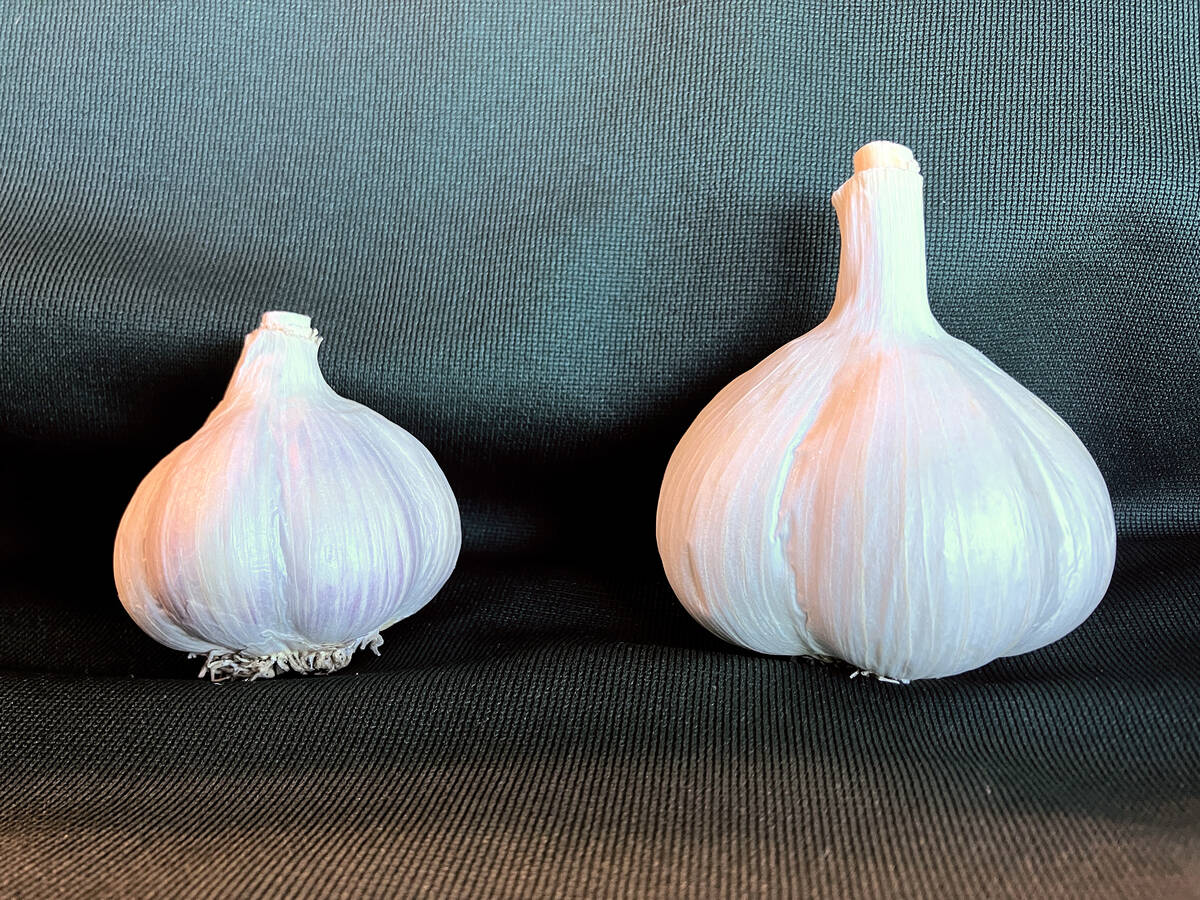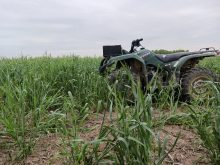Herbicide resistant weeds in all crops are a continuous concern, and for corn, these can be reduced with effective management practices.
“The whole strategy [of weed control] is going to revolve around prevention, through rotation, tillage – or lack thereof – and soil applied, or pre-plant herbicides, followed with scouting for escapes,” says Craig Reid, sales agronomist with Sprucedale Agromart.
Why it matters: Enforcing practices that help to eliminate weeds without encouraging the use of herbicides, or lack of variety in herbicides, can help to eliminate the concern of herbicide resistant weeds.
Read Also

Clean seed garlic promises bigger bulbs and higher returns for growers
Ontario garlic trials show clean seed outshines conventional yields, with stronger drought resilience, reduced virus risk and greater economic outcomes.
When looking at weed control in corn, practices to help reduce problem weeds carry throughout all crop years and species.
To start, the longer the rotation the better.
With more crops in the rotation, and the use of cover crops, there is less bare soil throughout the length of the entire rotation. This lowers the opportunity for weed seeds to germinate, and fewer make it to reproductive maturity – which means fewer are added back into the soil.
“If we can reduce or eliminate [weed production] it helps to, over time, reduce the weed seed bank. Including things like pasture and hay – perennial breaks in an annual rotation – gives the weed species that have a short life in the seed bank a chance to die before they ever germinate,” says Reid.
Canada Fleabane is an example of species that can have less of an impact if growers include just two years of perennial crops in rotation, as it has a short life span within the seed bank.
As well, having cover crops in the rotation that have proven to help suppress weeds can be beneficial.
“Cereal rye does a good job of suppressing Canada Fleabane in both the summer and the fall. Mike Cowbrough [OMAFRA weed specialist] has shown through his work that where the [cereal rye] is, at very low rates, there’s allelopathy. The fleabane that does germinate is smaller. There’s less of it, it’s easier to control.”
When looking at tillage for weed control it’s important to have a good understanding of weed species.
“If fleabane is a problem, doing fall and spring tillage that is aggressive enough to kill those seedlings and prevent them from establishing can be an integral part of a broadleaf weed control strategy,” Reid says.
When dealing with creeping perennials such as quack grass, perennial sow thistle or Canada thistle, tillage becomes much less effective.
“Those three species have a massive system of roots, connected by rhizomes. By doing tillage, all we are doing is cutting up the rhizomes and then actually driving them around the field; it will establish new patches.”
Looking at scouting to help manage broadleaf and grass weeds in corn, accurate crop staging, and proper identification of young weed species is of utmost importance to know what growers are dealing with when it comes to weed escapes, and how to effectively utilize herbicides.
“The reason that is so important is once we get into glyphosate-tolerant weeds and we are back to using conventional chemistries to control some of the species, some of them are only effective up to the four to eight leaf stage.”
Growers need to understand what they are dealing with early in the field to use a viable “rescue option”.
“We have to know what [the weed is], when [the corn] is two-leaf so we have enough time to get the sprayer there and get it under control,” says Reid.
When looking to herbicides for weed control in corn it’s best to use different modes of action to avoid resistance.
“I tend to steer away from group 14s on corn, not because they don’t work but because if you look at what we have available for soybeans, it’s so limited, I’m trying to save that mode of action for use on soybeans.”
Reid says North America is still lucky with not yet having to deal with glyphosate-resistant grasses.
“Western Canada is flirting with it. Australia has a big-time problem with annual ryegrass being glyphosate-tolerant. Prevention is obviously better than the knee jerk reaction after the fact.”
Soil applied herbicides help to lower the selection pressure on glyphosate for grasses that have been seen in the past,” says Reid.
For the best weed control in corn, and all crops, it’s ideal to understand the rotation in advance.
“I’m going to be sitting there having a conversation with my growers so that we’re not just talking about what we are going to do in 2022, but how’s that set us up for the crop that is going to be grown in that same piece of ground in 2023 and 2024.”
The thought process needs to shift to managing a piece of ground throughout the entire rotations for success during each crop.
“The nice thing about corn is that we have a huge number of options that are effective and relatively economical. How do we use them the best to set up the rest of the rotation to get ahead of these problems?”















